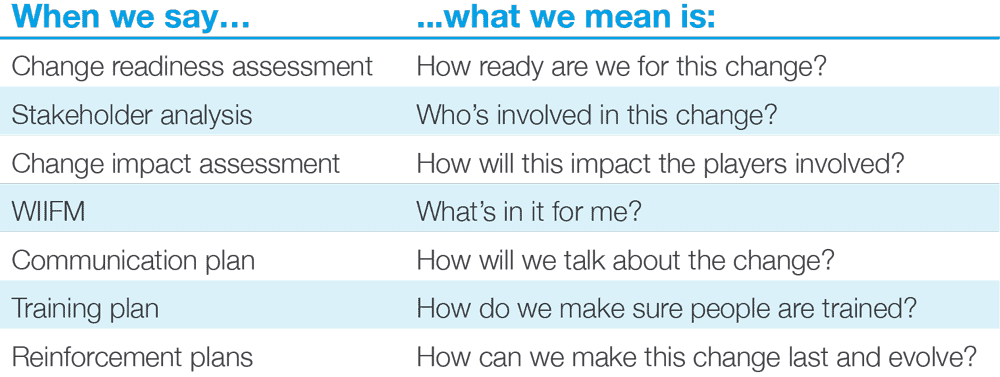If we’ve learned anything after 10 years in business, it’s that change is the only constant.
But as you probably know, there’s usually a “Who moved my cheese?” moment in any fast-paced and changing organization. The tendency for most people is to resist change kicking and screaming.
While that’s a natural reaction to change, anticipating, embracing, and managing change is the ideal path to success for your organization. At Silverline, our clients embark on digital transformation initiatives utilizing the Salesforce platform to improve their customer’s experience, enabling them to gain competitive advantage and foster growth.
What this really means is a lot of change in a short amount of time. These changes inevitably impact their employees, partners, and customers. Managing change successfully not only avoids pitfalls of cost overruns, employee disengagement, and decreased customer loyalty, but it sets your organization up to be more agile, efficient, and change-ready in the future.
Ready to change how you think about the importance of change management and unravel its mysteries? Let’s dive in.
What is change management, anyway?
Change management has a bit of a mysterious, buzzword-y reputation. Some consider it to mean managing technological changes, such as code releases or updates, but in our world, it’s about the people side of change.
Change management (n):
A strategic framework and approach to managing the inevitable change to employees which is brought about by our client’s digital transformation initiatives in order to ensure successful end-user adoption of the awesome solutions Silverline builds.
Change management is part of the broader discipline of organizational change management (OCM) designed to successfully navigate employees through any change. In practice, this means managing the thoughts and feelings of individuals undergoing change in a business setting, driving the behaviors which are best suited to successfully adapt and benefit from the change, and ensure successful adoption of new technology, and achievement of your organization’s defined business objectives.
The importance of change management
Why does it matter? A successful project is not only on time and budget, but results in delighted, productive users who realize expected benefits. Understanding and evangelizing the importance of change management can:
- Ensure adoption and usage performance
- Increase likelihood of true project success
- Achieve desired business objectives and outcomes
- Focus on employees — both in their buy-in and on a smooth transition
- Foster improved client satisfaction and loyalty
- Minimize risks and related costs
On the flip side, not managing change can create costly risks including decreased productivity, increased spend, and dissatisfied employees and/or customers. Without change management, a project can work on a technical level, but it can easily fail without the proper care and feeding of the people involved. This focus on people is where the value of change management lies.
From jargon to humanspeak
Change management comes with plenty of jargon, so before we deep-dive further, let’s talk about some other definitions and take the mystery out of them:

Who is responsible for change management?
The short answer: Everyone.
Everyone should be thinking about their role and the goals of the organization and playing their unique part in ensuring mutual success. That means working together to implement necessary changes as business evolves. This includes…
- Executive sponsor who actively leads the charge and sets the vision
- Leaders who align and reinforce this vision and tailoring the message to their specific teams
- Managers who provide specific direction to their direct reports
- Change Champions across the business who act as advocates, messengers, and role models for desired behaviors to drive change
The Silverline approach to successful adoption
We’ve developed our change management framework based on a combination of industry best practices, the Association of Change Management Professionals (ACMP) Standard, and the Prosci methodology that accelerates and maximizes user adoption.
The framework comes down to three phases:
Preparation
Planning, team development, discovery, stakeholder identification, analysis, engagement, and assessing change readiness
Enablement
Detailed stakeholder analysis, role and process change impact, communications, training, and reinforcement planning
Reinforcement
Ongoing support and training, monitoring outcomes and adoption, feedback and enhancements, and of course, celebrating a job well done
We’ll dig into each one of these phases throughout the series.
Don’t want to wait for the next piece? Get your copy of Unlocking the Mystery of Change Management now.





